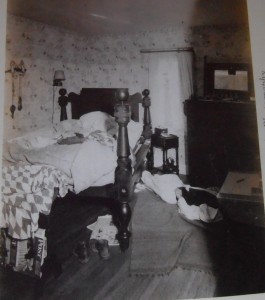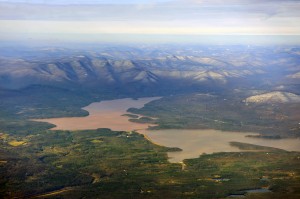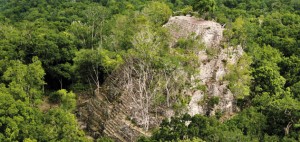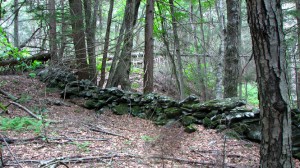War leaves scars; not only to humans, but to the physical landscape as well. Weapons, bullets, bodies, and destroyed buildings are just some of the remains that signify war. These remains are noticeable many years after their deposition, allowing archaeologists to study warfare of past civilizations. Such warfare archaeology “can provide a… context for… the inevitability of war and its role in modern civilization” [4, pg. 60]. Hamoukar is one such archaeological site that cannot only tell us a great deal about past warfare but can also teach important lessons for today.
![Above is an aerial photograph of Hamoukar which provides archaeologists a better view and interpretation of the site [1].](http://pages.vassar.edu/realarchaeology/files/2013/11/WAR1.png)
Above is an aerial photograph of Hamoukar which provides archaeologists a better view and interpretation of the site [1].
![The above image shows various sling-fired missiles found at Hamoukar. The deformed ones resulted from impact after hitting a building or wall. [2]](http://pages.vassar.edu/realarchaeology/files/2013/11/WAR2.png)
The above image shows various sling-fired missiles found at Hamoukar. The deformed ones resulted from impact after hitting a building or wall. [2]
These uses of archaeology can also be applied to warfare today. The current Syrian conflict gives archaeologists a new way to look at Hamoukar. Ironically, archaeologists are currently unable to excavate the warfare aspect of Hamoukar due to today’s Syrian conflict. Unanswered questions that can help today’s conflict include how warfare in Hamoukar affected the Syrian landscape. How did the Hamoukar war affect agriculture? How did that conflict change people’s professions and how did it change people’s relationships with the land? Warfare archaeology uniquely studies an aspect of culture that has occurred for thousands of years. In both settings, two groups of people fought, buildings were destroyed, and remains of struggle were left behind. The only difference between these wars is a 5,500 year gap; people then and now still live on the same land and the archaeology of warfare can look at past people’s struggles to provide solutions to living harmoniously today.
References
[1] Reichel, Clemens D. Figure 1. Digital image. Annual Reports 2005-2006. The Hamoukar Expedition, 2006. Web. 24 Nov. 2013. <http://oi.uchicago.edu/pdf/05- 06_Hamoukar.pdf>.
[2] Reichel, Clemens D. Figure 17. Digital image. Annual Reports 2005-2006. The Hamoukar Expedition, 2006. Web. 24 Nov. 2013. <http://oi.uchicago.edu/pdf/05- 06_Hamoukar.pdf>.
[3] Reichel, Clemens D. “Hamoukar.” Annual Reports 2005-2006. The Hamoukar Expedition, 2006. Web. 24 Nov. 2013. <http://oi.uchicago.edu/pdf/05- 06_Hamoukar.pdf>.
[4] Sabloff, Jeremy A. Archaeology Matters: Action Archaeology in the Modern World. Walnut Creek, CA: Left Coast, 2008. Print.
[5] Wilford, John Noble. “Archaeologists Unearth a War Zone 5,500 Years Old.” The New York Times. The New York Times, 16 Dec. 2005. Web. 24 Nov. 2013. <http://www.nytimes.com/2005/12/16/international/middleeast/16battle.html?_r=2>.





